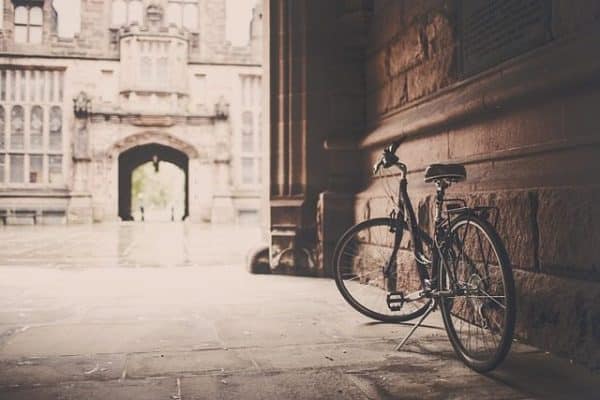Renting a bike in the UK can be an exhilarating experience, especially given the beautiful landscapes and vibrant cities. However, understanding the UK cycling safety rules: what every bike renter must know is crucial to ensure a safe and enjoyable ride. Familiarizing yourself with the bicycle laws in the UK is essential for every cyclist, especially those who rent bikes.
From legal requirements to essential safety tips, this guide will equip you with all the information you need to navigate the roads confidently and responsibly while adhering to bicycle regulations.
UK cycling laws: what every cyclist must know
Knowledge of UK cycling laws is fundamental for all cyclists, especially those renting bikes. The laws are designed to promote safety and ensure that all road users can coexist peacefully. Understanding the bicycle rules can help you enjoy your ride without any legal issues.
For instance, cyclists are allowed to use bus lanes in most areas, which can be a great advantage during rush hour. However, it is essential to check local regulations as some bus lanes may restrict bike access.
- Lights and reflectors: Cyclists must have working front and rear lights during night riding.
- Brakes: Your bike must have at least one working brake.
- E-bike regulations: Certain rules apply for e-bikes, including the requirement for insurance in some areas.
Understanding these laws not only helps avoid fines but also enhances overall safety on the road. Ignoring bike laws in the UK can lead to serious consequences.

What are the 13 most important UK cycling rules for 2024?
As cycling continues to grow in popularity, staying updated on the most important UK cycling rules for 2024 is essential for every cyclist, especially renters. Here are some key rules to remember:
- Always wear a helmet, even if not legally required.
- Use hand signals to indicate turns and stops.
- Do not cycle on the pavement unless in designated areas.
- Avoid using mobile phones while riding.
- Respect traffic lights and signs at all times.
- Stay in the cycle lane where available.
- Be visible; wear bright clothing during the day.
- Ensure your bike is roadworthy before riding.
- Report any faulty bikes immediately.
- Use lights after dark or in poor visibility conditions.
- Do not drink and ride.
- Be cautious of pedestrians and other road users.
- Utilize bike-sharing systems responsibly.
Adhering to these rules can significantly reduce the risk of accidents and improve your cycling experience in the UK. Familiarizing yourself with bicycle regulations is vital for a smooth journey.
Can cyclists use bus lanes in the UK?
Yes, in many areas, cyclists are allowed to use bus lanes, which can provide a safer and faster route through busy traffic. However, it’s important to check local regulations, as some cities have restrictions. Understanding these bicycle laws in the UK can enhance your riding experience.
Utilizing bus lanes can be beneficial, but cyclists should remain vigilant and aware of their surroundings. Remember that buses may also use these lanes, so be prepared to yield when necessary.
Being aware of bus lane regulations in your area can make a significant difference in your cycling experience and safety while navigating busy streets.

Is it illegal to cycle without a helmet in the UK?
No, it is not illegal to cycle without a helmet in the UK. However, wearing a helmet is strongly recommended for safety reasons. It can significantly reduce the risk of head injuries in the event of an accident.
Many organizations and cycling groups advocate for helmet use, and some bike rental services already provide helmets with their bikes. Taking this precaution can be a wise choice for all riders, especially beginners. Understanding the bicycle rules can help reinforce the importance of helmet use.
Do cyclists have to stop at red traffic lights?
Yes, cyclists are required to stop at red traffic lights, just like any other vehicle on the road. Failing to do so can result in fines and puts the cyclist at unnecessary risk. Ignoring these bike laws can lead to serious consequences.
Obeying traffic signals is a vital part of riding safely. Cyclists should always be mindful of their surroundings and be prepared to stop when required, ensuring a safer environment for everyone on the road.
How to ensure your bike is safe before riding?
Before you set off on your cycling adventure, it is crucial to perform a safety check on your bike. This includes checking the brakes, lights, and tire pressure. Here are some steps to follow:

- Inspect the brakes to ensure they are functioning correctly.
- Check that the tires are adequately inflated and in good condition.
- Make sure the bike chain is clean and lubricated.
- Ensure the saddle and handlebars are securely adjusted.
- Look for any loose components or potential hazards.
Conducting a routine check, often referred to as the M-check, can help avoid accidents and ensure your bike is in optimal riding condition. Understanding these safety checks is part of adhering to bicycle regulations.
What are the top 10 bicycle safety tips?
Staying safe while cycling involves a combination of knowledge and precaution. Here are the top 10 bicycle safety tips every renter should keep in mind:
- Wear a helmet for protection.
- Be visible; use lights and reflective gear.
- Use hand signals to communicate with drivers.
- Keep a safe distance from parked cars to avoid opening doors.
- Always look both ways before entering intersections.
- Follow the rules of the road, including traffic signals.
- Avoid distractions, such as using a phone.
- Stay alert to your surroundings; anticipate potential hazards.
- Ensure your bike is well-maintained.
- Ride at a safe speed, considering traffic conditions.
By following these tips, cyclists can significantly reduce the risk of accidents and enjoy a safer riding experience. Being aware of bicycle laws in the UK will further enhance your safety on the road.
Questions related to UK cycling safety rules
What is the 75 rule in cycling?
The 75 rule refers to the guideline that cyclists should maintain a distance of at least 75 cm from the curb while riding. This helps avoid accidents and allows for better maneuverability in case of unexpected obstacles.
Keeping this distance can significantly enhance safety, especially in urban areas where road conditions can be unpredictable. By adhering to the 75 rule, cyclists also promote a more responsible cycling culture.

What is the rule 67 for cycling?
Rule 67 of the UK Highway Code states that cyclists should not use cycle lanes if they are not marked for them. This ensures that cyclists stay within designated areas, promoting safety for both cyclists and other road users. Understanding these bicycle regulations is crucial for safe cycling.
Understanding this rule can help prevent accidents and confusion on the road, allowing cyclists to navigate more safely through traffic.
What are the rules for riding a bike in the UK?
The rules for riding a bike in the UK include wearing a helmet, using lights at night, obeying traffic signals, and ensuring the bike is roadworthy. Cyclists must also follow specific regulations regarding bus lanes and cycle paths, aiming for a safe riding experience. Being aware of these bike laws can help avoid legal issues.
Following these rules not only helps cyclists avoid fines but also contributes to a safer environment for everyone on the road.
What is the rule 13 in cycling?
Rule 13 emphasizes that cyclists should ride in single file on busy roads, especially when there are vehicles close behind. This practice enhances safety by reducing the risk of accidents caused by overtaking vehicles.

By adhering to this rule, cyclists can contribute to safer road conditions and foster a better relationship with other road users.


Leave a Reply